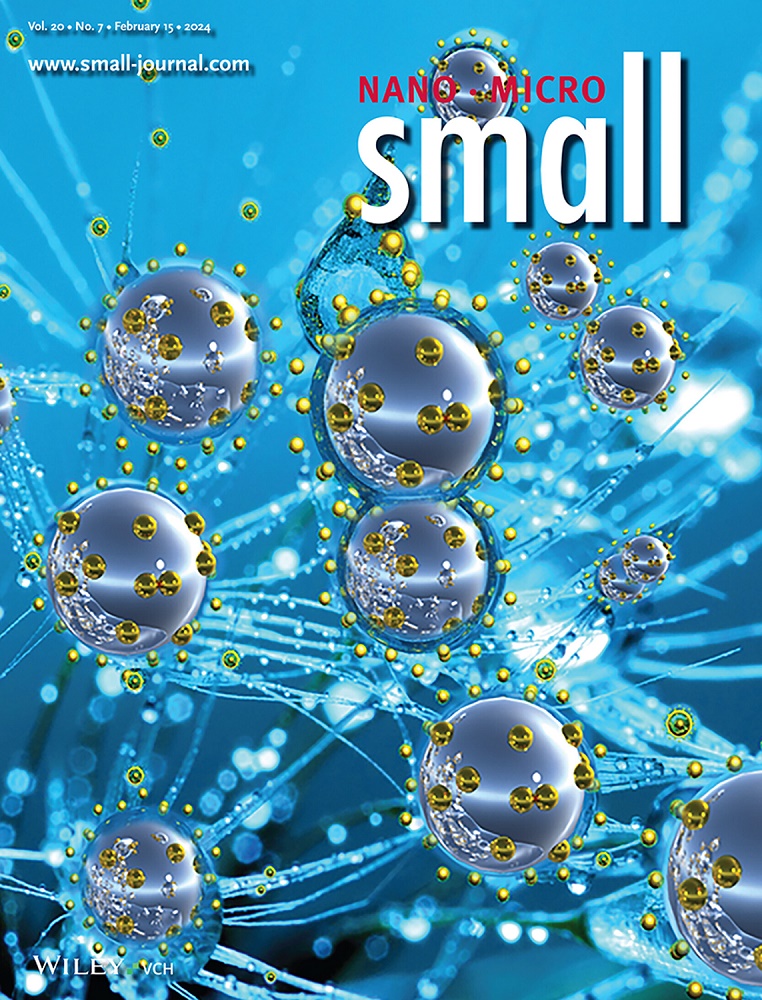Magnetically Propelled Microrobots toward Photosynthesis of Green Ammonia from Nitrates (Small 14/2025)
IF 12.1
2区 材料科学
Q1 CHEMISTRY, MULTIDISCIPLINARY
引用次数: 0
Abstract
Ammonia Synthesis
In article number 2407050, Martin Pumera and co-workers demonstrate magnetic ammonia-generation microrobots photosynthesizing ammonia from nitrates. Controlled by a rotating magnetic field, these microrobots can convert nitrate to value-added green ammonia using renewable light energy sources. The magnetic propulsion of the microrobots significantly improves mass transfer and enhances the efficiency of the photochemical synthesis of ammonia.

磁性推进的微型机器人用于硝酸盐中绿色氨的光合作用(Small 14/2025)
在文章编号2407050中,Martin Pumera和他的同事展示了磁性制氨微型机器人从硝酸盐中进行氨的光合作用。在旋转磁场的控制下,这些微型机器人可以利用可再生光能将硝酸盐转化为增值的绿色氨。微型机器人的磁性推进显著改善了传质,提高了光化学合成氨的效率。
本文章由计算机程序翻译,如有差异,请以英文原文为准。
求助全文
约1分钟内获得全文
求助全文
来源期刊

Small
工程技术-材料科学:综合
CiteScore
17.70
自引率
3.80%
发文量
1830
审稿时长
2.1 months
期刊介绍:
Small serves as an exceptional platform for both experimental and theoretical studies in fundamental and applied interdisciplinary research at the nano- and microscale. The journal offers a compelling mix of peer-reviewed Research Articles, Reviews, Perspectives, and Comments.
With a remarkable 2022 Journal Impact Factor of 13.3 (Journal Citation Reports from Clarivate Analytics, 2023), Small remains among the top multidisciplinary journals, covering a wide range of topics at the interface of materials science, chemistry, physics, engineering, medicine, and biology.
Small's readership includes biochemists, biologists, biomedical scientists, chemists, engineers, information technologists, materials scientists, physicists, and theoreticians alike.
 求助内容:
求助内容: 应助结果提醒方式:
应助结果提醒方式:


